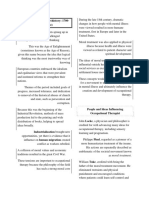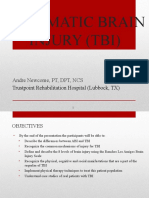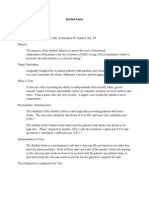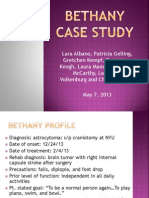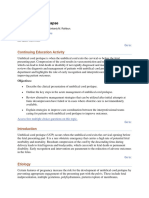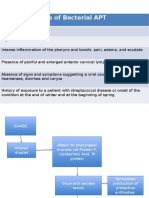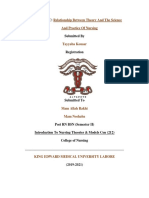0 ratings0% found this document useful (0 votes)
684 viewsMOHOST Information
MOHOST Information
Uploaded by
Richard FullertonInformation on MOHOST
Copyright:
© All Rights Reserved
Available Formats
Download as PDF, TXT or read online from Scribd
MOHOST Information
MOHOST Information
Uploaded by
Richard Fullerton0 ratings0% found this document useful (0 votes)
684 views1 pageInformation on MOHOST
Copyright
© © All Rights Reserved
Available Formats
PDF, TXT or read online from Scribd
Share this document
Did you find this document useful?
Is this content inappropriate?
Information on MOHOST
Copyright:
© All Rights Reserved
Available Formats
Download as PDF, TXT or read online from Scribd
Download as pdf or txt
0 ratings0% found this document useful (0 votes)
684 views1 pageMOHOST Information
MOHOST Information
Uploaded by
Richard FullertonInformation on MOHOST
Copyright:
© All Rights Reserved
Available Formats
Download as PDF, TXT or read online from Scribd
Download as pdf or txt
You are on page 1of 1
MOHOSTModel of Hu a Occupaio Scree i g Tool
Who can use the assessment?
Occupational Therapists. Although it can be used without specific training this would be recommended. The
College of Occupational Therapists offer MOHOST training events regularly and in September a days workshop
was hosted by South Staffordshire and Shropshire Healthcare NHS Foundation trust. The MOHO website has
further information regarding both the model and the screening tool and also a link to purchase the manuals for
the MOHOST: http://www.cade.uic.edu/moho/default.aspx
Background
The MOHOST is an assessment that addresses the majority of MOHO concepts (volition, habituation, skills, and
environment), allowing the therapist to gain an overview of the client's occupational functioning. Developed in
Britain by practitioners, the MOHOST seeks to objectify the information a therapist gathers while screening for
occupational therapy services. The MOHOST uses a variety of data collection methods and is flexible enough to
be used in a variety of intervention settings. Finally, the MOHOST uses language that enables therapist to communicate findings clearly with clients, their families, and other professionals.
The MOHOST addresses client's motivation for occupation, pattern of occupation, communication, process, and
motor skills, and environment. The MOHOST was designed to be used to document progress towards occupational therapy intervention goals as well as to screen for occupational therapy services.
Client Group
MOHOST is intended for use with any person experiencing problems in their occupational life and is designed to
be applicable across the life span. The MOHOST has been applied with such diverse groups as adults with chronic pain, children with attention deficit hyperactivity disorder, persons with traumatic brain injury, older persons
with dementia, persons living with AIDS, and adolescents with mental illness. It has also been applied in situations dealing with children and adults who are homeless, with battle-fatigued soldiers, and with victims of war
and social injustice.
MOHOST can also used in a variety of contexts. For example, it has been applied in hospitals, outpatient clinics,
residential facilities, nursing homes, rehabilitation programs, work programs, prisons and secure hospitals and
community based settings.
Governance issues
Any governance issues to consider (e.g. always support standardised assessment with functional assessment or
to be used inline with specific legal requirements). MOHOST manuals and forms are copyrighted but can be purchased at:http://www.cade.uic.edu/moho/productDetails.aspx?aid=4 for $43.50 (approx 28)
Evidence base
- Parkinson S, Morley M, Stewart L, Brockbank H (2012) Meeting the occupational needs of mental health service users: indicative care packages and actual practice. British Journal of Occupational Therapy, 75(8), 384389.
- Lee SW, Taylor RR, Morley M, Heasman D, Garnham M, Willis S, Parkinson S, Forsyth, K, Melton J (2012) Impact of Using the Model of Human Occupation: A survey of Occupational Therapy Mental Health Practitioners
Perceptions. Scandinavian Journal of Occupational Therapy, 19(5), 450-456.
- Forsyth K, Parkinson S, Kielhofner G, Kramer J, Mann LS, Duncan EAS (2011) The measurement properties of
the model of human occupation screening tool and implications for practice. New Zealand Journal of Occupational Therapy, 58 (2), 5-13.
- Parkinson S, Morley M (2011) No Health without Occupation. Occupational Therapy News, 19(8), 34-35.
- Blount J, Parkinson S (2010) Assessments linked to professional models of practice strengthen our evidence
base. Mental Health Occupational Therapy, 15(2), 37-40.
- Parkinson S, Chester A, Cratchley S, Rowbottom J (2008) Application of the Model of Human Occupation
Screening Tool (MOHOST assessment) in an acute psychiatric setting. Occupational Therapy in Health Care, 22
(2-3), 63-75.
- Forsyth K, Kielhofner G, Bowyer P, Kramer K, Ploszaj A, Blondis M, Hinson-Smith R, Parkinson S (2008)
Assessments combining methods of information gathering. In 4th Kielhofner G ed. Model of Human Occupa
tion: Theory and Application. ed. Lippincott, Williams and Wilkins, Philadelphia, 289-310.
For further Information:
Nigel Selwood
Occupational Therapist
Pine Ward, Redwoods Centre, Shrewsbury
email: nigel.selwood@sssft.nhs.uk
You might also like
- AI3021 Unit 2 Notes.Document14 pagesAI3021 Unit 2 Notes.tech nagaNo ratings yet
- The Multicontext Approach to Cognitive Rehabilitation: A Metacognitive Strategy Intervention to Optimize Functional CognitionFrom EverandThe Multicontext Approach to Cognitive Rehabilitation: A Metacognitive Strategy Intervention to Optimize Functional CognitionNo ratings yet
- Paradigm Critique PaperDocument15 pagesParadigm Critique Papergkempf10No ratings yet
- Occupational Therapy: Energy Conservation Booklet Patient Information Lea EtDocument16 pagesOccupational Therapy: Energy Conservation Booklet Patient Information Lea EtsherNo ratings yet
- Occupational Therapy PrehistoryDocument3 pagesOccupational Therapy PrehistoryKean Debert SaladagaNo ratings yet
- History of Bracco ItalianoDocument11 pagesHistory of Bracco ItalianopuzzlebsNo ratings yet
- CPT ComprehensiveDocument14 pagesCPT Comprehensivesha50% (2)
- 13 OT Occup Rehab AOTA Exam PrepDocument17 pages13 OT Occup Rehab AOTA Exam PrepThirdy BullerNo ratings yet
- Occupations Across The LifespanDocument6 pagesOccupations Across The LifespanMary Elizabeth JoyceNo ratings yet
- Hazley Jarrett Jordan-Final Cimt Systematic Review AltDocument14 pagesHazley Jarrett Jordan-Final Cimt Systematic Review Altapi-518986604No ratings yet
- PDT PlanDocument2 pagesPDT Planapi-283869583No ratings yet
- TBI Lecture HSU - Andre Newcome 2018Document102 pagesTBI Lecture HSU - Andre Newcome 2018Aaron James GrayNo ratings yet
- Psychodynamic and Humanistic Frames of ReferenceDocument22 pagesPsychodynamic and Humanistic Frames of ReferenceNursubhanie MohamedarshadNo ratings yet
- Recess PromotionDocument2 pagesRecess PromotionThe American Occupational Therapy Association100% (1)
- Mot SyllabusDocument30 pagesMot SyllabusShanthoshini Baskaran100% (1)
- Occt 652a - ResumeDocument3 pagesOcct 652a - Resumeapi-279916752No ratings yet
- Canadian Journal of Occupational TherapyDocument9 pagesCanadian Journal of Occupational TherapyFrancesca Gozman100% (1)
- Aota PDFDocument2 pagesAota PDFJuliana MassariolliNo ratings yet
- Barthel vs. FIMDocument5 pagesBarthel vs. FIMFrancisco CampoverdeNo ratings yet
- Occupational Profile M Viveros FinalDocument19 pagesOccupational Profile M Viveros Finalapi-293258738No ratings yet
- Canadian Occupational Performance Measure (COPM) in Primary Care: A Profile of PracticeDocument8 pagesCanadian Occupational Performance Measure (COPM) in Primary Care: A Profile of Practiceisabel gomez100% (1)
- Article 1Document7 pagesArticle 1dguginNo ratings yet
- Pool Activity Level (PAL) Instrument For Occupational ProfilingDocument35 pagesPool Activity Level (PAL) Instrument For Occupational ProfilingAngela GohNo ratings yet
- Section 3 Quiz: Multiple ChoiceDocument2 pagesSection 3 Quiz: Multiple ChoicepoNo ratings yet
- Presented By: Ashlee Barbeau Student Occupational Therapist, Queen's UniversityDocument22 pagesPresented By: Ashlee Barbeau Student Occupational Therapist, Queen's UniversityDanielle Stella N'LucaNo ratings yet
- Client-Centered AssessmentDocument4 pagesClient-Centered AssessmentHon “Issac” KinHo100% (1)
- Occupational Therapy Rehabilitation Paraplegic PatientDocument7 pagesOccupational Therapy Rehabilitation Paraplegic PatientAlina PasăreNo ratings yet
- Immuno Part CsDocument15 pagesImmuno Part CsCecilia TesoreroNo ratings yet
- Self Assessment PDT 2 1Document1 pageSelf Assessment PDT 2 1api-518497061No ratings yet
- Occupational Therapy Association of The PhilippinesDocument12 pagesOccupational Therapy Association of The PhilippinesChia ChangNo ratings yet
- Strategies Used by Occupational Therapy To Maximize ADL IndependenceDocument53 pagesStrategies Used by Occupational Therapy To Maximize ADL IndependenceNizam lotfi100% (1)
- Forensic Psychiatry and Occupational TherapyDocument3 pagesForensic Psychiatry and Occupational TherapyVuyokazi Nosipho MajolaNo ratings yet
- Occt 526 - Child-Based PicoDocument14 pagesOcct 526 - Child-Based Picoapi-291380671No ratings yet
- Ethical DilemmaDocument5 pagesEthical DilemmaSean LoranNo ratings yet
- B. Occupational Therapy (Hons.) : Faculty of Health Sciences Universiti Teknologi MaraDocument3 pagesB. Occupational Therapy (Hons.) : Faculty of Health Sciences Universiti Teknologi MaraSiti Nur Hafidzoh OmarNo ratings yet
- CC StrokeDocument13 pagesCC Strokeapi-436090845100% (1)
- Canadian Model of Occupational Performance - OverviewDocument1 pageCanadian Model of Occupational Performance - OverviewbriannavangyzenNo ratings yet
- AprJul2017 PublicReportDocument130 pagesAprJul2017 PublicReportAgnes Claudia100% (1)
- Dorsal Blocking SplintDocument2 pagesDorsal Blocking Splintapi-234072677No ratings yet
- Program ProposalDocument17 pagesProgram Proposalapi-582621575No ratings yet
- StrokeDocument5 pagesStrokeapi-261670650No ratings yet
- Placement HandbookDocument551 pagesPlacement HandbookAdonis GaleosNo ratings yet
- Hand TherapyDocument24 pagesHand TherapyJorge LucasNo ratings yet
- Hammel L 2013Document9 pagesHammel L 2013Aan AndreanNo ratings yet
- Occupational Profile and Intervention PlanDocument18 pagesOccupational Profile and Intervention Planapi-282525755No ratings yet
- A Frame of Reference For The WritingDocument29 pagesA Frame of Reference For The WritingkuraNo ratings yet
- ADocument7 pagesARaphael AguiarNo ratings yet
- Pictorial History of AOTADocument5 pagesPictorial History of AOTAThe American Occupational Therapy Association0% (4)
- Soap NoteDocument2 pagesSoap Noteapi-382628487No ratings yet
- Barthel IndexDocument2 pagesBarthel IndexWilLy TaniaNo ratings yet
- Occupational Therapy and Mental Health 1Document18 pagesOccupational Therapy and Mental Health 1Roman -No ratings yet
- CPPFFFFFDocument4 pagesCPPFFFFFEdu Edu100% (1)
- History of Occupational TherapyDocument3 pagesHistory of Occupational TherapyHannah GuintoNo ratings yet
- New Intervention PlanDocument17 pagesNew Intervention Planapi-282753416No ratings yet
- 630 Occupational Profile AssignmentDocument13 pages630 Occupational Profile Assignmentapi-201999002No ratings yet
- Occupational Analysis Intervention Plan PDFDocument20 pagesOccupational Analysis Intervention Plan PDFapi-293182319No ratings yet
- Dissertation Examples Occupational TherapyDocument8 pagesDissertation Examples Occupational TherapyPaperWriterLowell100% (1)
- Bethany Case StudyDocument25 pagesBethany Case StudyMegan McCarthyNo ratings yet
- Running Head: Occupational Profile & Intervention Plan 1Document18 pagesRunning Head: Occupational Profile & Intervention Plan 1api-238107777No ratings yet
- International Classification of Functioning, Disability and HealthDocument21 pagesInternational Classification of Functioning, Disability and HealthSensible100% (1)
- AOTA Occupational Profile Template PDFDocument2 pagesAOTA Occupational Profile Template PDFCrys Paola Alvarez GonzalezNo ratings yet
- Occupational Therapy in Oncology and Palliative CareDocument10 pagesOccupational Therapy in Oncology and Palliative CareSenthil KumarNo ratings yet
- Umbilical Cord ProlapseDocument5 pagesUmbilical Cord Prolapseangga hergaNo ratings yet
- Lactoferrin-Natural Multifunctional AntimicrobialDocument93 pagesLactoferrin-Natural Multifunctional AntimicrobialDang Thu Huong100% (1)
- Building Materials Risk AssessmentDocument3 pagesBuilding Materials Risk AssessmentAhmed El-sherpiniNo ratings yet
- PLASMAPHERESISDocument18 pagesPLASMAPHERESISmuhammad24fayazNo ratings yet
- Gastro NleDocument121 pagesGastro NleVinsuiCzar BaylonNo ratings yet
- Paper - B Written Test Paper For Selection of Teachers: CSB 2013 English (PGT) : Subject Code: P11Document4 pagesPaper - B Written Test Paper For Selection of Teachers: CSB 2013 English (PGT) : Subject Code: P11Amrit SinhaNo ratings yet
- Final Project and Paper Istc 541 - Monroe and ProudlockDocument33 pagesFinal Project and Paper Istc 541 - Monroe and Proudlockapi-618447012No ratings yet
- Dental Public Health in Action: Utilising A Telephone Triage System To Run An Urgent Dental Care Hub During The COVID-19 PandemicDocument4 pagesDental Public Health in Action: Utilising A Telephone Triage System To Run An Urgent Dental Care Hub During The COVID-19 PandemicWindy Widya HasibuanNo ratings yet
- Film ReviewDocument5 pagesFilm ReviewKim Marcella LoNo ratings yet
- Dna ExtractionDocument2 pagesDna Extractionapi-358984084No ratings yet
- Amosup Request LetterDocument1 pageAmosup Request LetterSeilfred SanggoNo ratings yet
- Lungs and Gas Exchange - Lesson 1 - Grade 8Document13 pagesLungs and Gas Exchange - Lesson 1 - Grade 8SAMI DHAOUINo ratings yet
- Secondary CarotenemiaDocument3 pagesSecondary CarotenemiaMedrechEditorialNo ratings yet
- PreAlbumin ARC CHEMDocument8 pagesPreAlbumin ARC CHEMbassam alharaziNo ratings yet
- Nursing NotesDocument16 pagesNursing NotesChelzie LasernaNo ratings yet
- Roiger Bullock AP2e PPT Chapter01Document83 pagesRoiger Bullock AP2e PPT Chapter01Jemuel Harel M. FloridaNo ratings yet
- Nursing Diagnosis: Ineffective Health Maintenance: NOC Outcomes (Nursing Outcomes Classification)Document6 pagesNursing Diagnosis: Ineffective Health Maintenance: NOC Outcomes (Nursing Outcomes Classification)شموخي قاهرهم فديتنيNo ratings yet
- CAMC Part 1 - May 6th (Recall)Document6 pagesCAMC Part 1 - May 6th (Recall)jprocopehNo ratings yet
- Wardclass Output2Document5 pagesWardclass Output2lemonsky_aceNo ratings yet
- ERV2010Document2 pagesERV2010ahmadtaiyabiNo ratings yet
- Acute TonsillopharyngitisDocument17 pagesAcute TonsillopharyngitisRachel Haide NaravalNo ratings yet
- Topic:: Relationship Between Theory and The Science and Practice of NursingDocument6 pagesTopic:: Relationship Between Theory and The Science and Practice of NursingAhmad anasNo ratings yet
- Case Study Bronchiolitis UpdatedDocument23 pagesCase Study Bronchiolitis UpdatedwokorowNo ratings yet
- SC 1.3 Accreditation in The Field of Microbiological Testing (Issue 2, 10 Feb 2022)Document14 pagesSC 1.3 Accreditation in The Field of Microbiological Testing (Issue 2, 10 Feb 2022)eurofinsnml2015No ratings yet
- Excretory System: Rectal PapillaeDocument83 pagesExcretory System: Rectal PapillaeyusufibanuNo ratings yet
- Mini Project Final PresentationDocument28 pagesMini Project Final Presentationrohan vNo ratings yet
- 1) Nursing Careplan For FeverDocument9 pages1) Nursing Careplan For FeverY. Beatrice AbigailNo ratings yet




